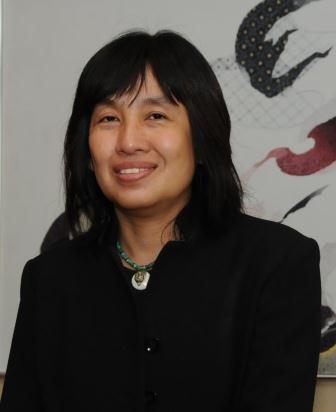
Sainsbury: What are your top priorities for the next 12-18 months?
Dejakaisaya: We have invested over 3.6 billion baht in upgrading our system architecture and IT infrastructure over the last few years. These investments have been in line with our strategic positioning, ‘Krungsri Make Life Simple’, which aims to eliminate unnecessary processes, reduce paper usage and minimise the time required to process customer transactions. Over the next 12 to 18 months, we will now turn around attention to using multi-channel platforms enhance customer experience and improve productivity. We plan to extend our presence in internet and mobile banking platforms.
Data management and analytics are also a key focus. We would like to be seen as a data-driven organisation. This is crucial to our business given the number of acquisitions we have executed in the past few years. Data migration from different platforms is taking time, as it has been quite challenging to consolidate our existing data warehouses to a single one. This project is in progress and we expect to see some good outcomes in the near future.
Sainsbury: Thailand has developed a tradition of technology innovation in financial services. What do you think has driven this trend?
Dejakaisaya: Banks are no longer just competing in the banking industry; they now face challenges from new entrants such as telecommunications and retail store, who are able to access customers directly and reach them easily. Banks have responded by launching innovative products on a continuous basis. These products are easily accessible to customers, feature attractive pricing structures and form part of an up-selling and cross-selling strategy.
Sainsbury: How do you see the roles of branch, online and mobile channels evolving into the future?
Dejakaisaya: The branch is still a traditional channel for opening new accounts, loan applications, bill payment and money transfer for those customers that prefer face-to-face transactions and are concerned about online and mobile security.
However, Generation X and Y are a growing demographic and they prefer internet and mobile transactions. In Thailand, the number of mobile phones exceeds the population of 69 million and with 3G the network coverage is quite high. In light of this, we expect a rise in virtual and mobile banking application. We have introduced mobile and virtual banking applications, and promoted them extensively to attract customers to these new channels.
That said, while the cost per transaction of e-channels and mobile is lower than the branch unit cost, branches remain a key channel for maintaining customer relationships. From this perspective, I cannot see other channels competing with the branch in the short term.
Sainsbury: As Thailand becomes an increasingly attractive region for global banks, what opportunities will local banks be able to leverage to maintain a competitive advantage?
Dejakaisaya: It is not easy for foreign banks to penetrate the local market, due to the lack of coverage and requirements around their branch presence and numbers. Local banks can retain their competitive advantage by rationalising the number of branches they have, improving customer loyalty and introducing additional channels and partnerships to support their products.
Sainsbury: The Krungsri Group acquired HSBC Thailand’s retail arm recently. How has the integration of systems progressed?
Dejakaisaya: The loan portfolio system migration has been completed successfully. We are currently immigrating our credit card portfolio and this is tentatively set to be completed by the end of this year.
Sainsbury: What opportunities do you see for social banking – for example, through Facebook?
Dejakaisaya: Facebook is another channel which allows us to connect easily with our potential customers, communicate with our existing customers and share ideas with our broader market. As a financial services provider, we still have significant concerns around the potential for negative feedback to spread quickly across Facebook without our control. It poses challenges to managing our image and reputation.
In the past, mobile banking and internet banking packages have been developed to connect bank transactions with social networks. I see a lot of opportunities and challenges in this area.
Sainsbury: What do you think are the most effective strategies for engagement with customers through social media?
Dejakaisaya: Thai people are accustomed to social media networks and use these platforms regularly to connect with friends, chat and share photos. We mirror this and try to become part of their online world, with the aim of being seen as one of their ‘friends’. We drive online engagement by posting interesting news, online activities and encourage feedback via our Facebook page. We also invite our Facebook fans to be part of focus groups for product launches and marketing campaigns.
Sainsbury: What gadgets do you use outside of your work?
Dejakaisaya: I use both an iPad and iPhone. As an IT professional, I receive hundreds of emails about new technologies, solutions and consulting offers, so I have made the decision to stop reading those emails on the weekend. I also use YouTube and Google to learn and pursue my interest in cooking, the DIY clips are a great tool.
Sainsbury: What inspires you to work in technology and financial services?
Dejakaisaya: I have been working in IT and financial services for almost 30 years and the varied changes continue to challenge me. These changes range from product innovation, growth, productivity, security and regulatory control requirements, and our challenge is to develop IT solutions to cover the end-to-end process. It is exciting to be involved in understanding the requirements, design, solution selection and implementation; and it is rewarding to succeed and be able to move onto the next new IT development.
Sainsbury: Every IT leader, particularly at your level, has a legacy they wish to be remembered for. What is yours?
Dejakaisaya: For me, this is simple: if we never try, we never know. If we fail, we learn from mistakes. If we succeed, we look forward to doing better next time. And last but not least, never give up.





